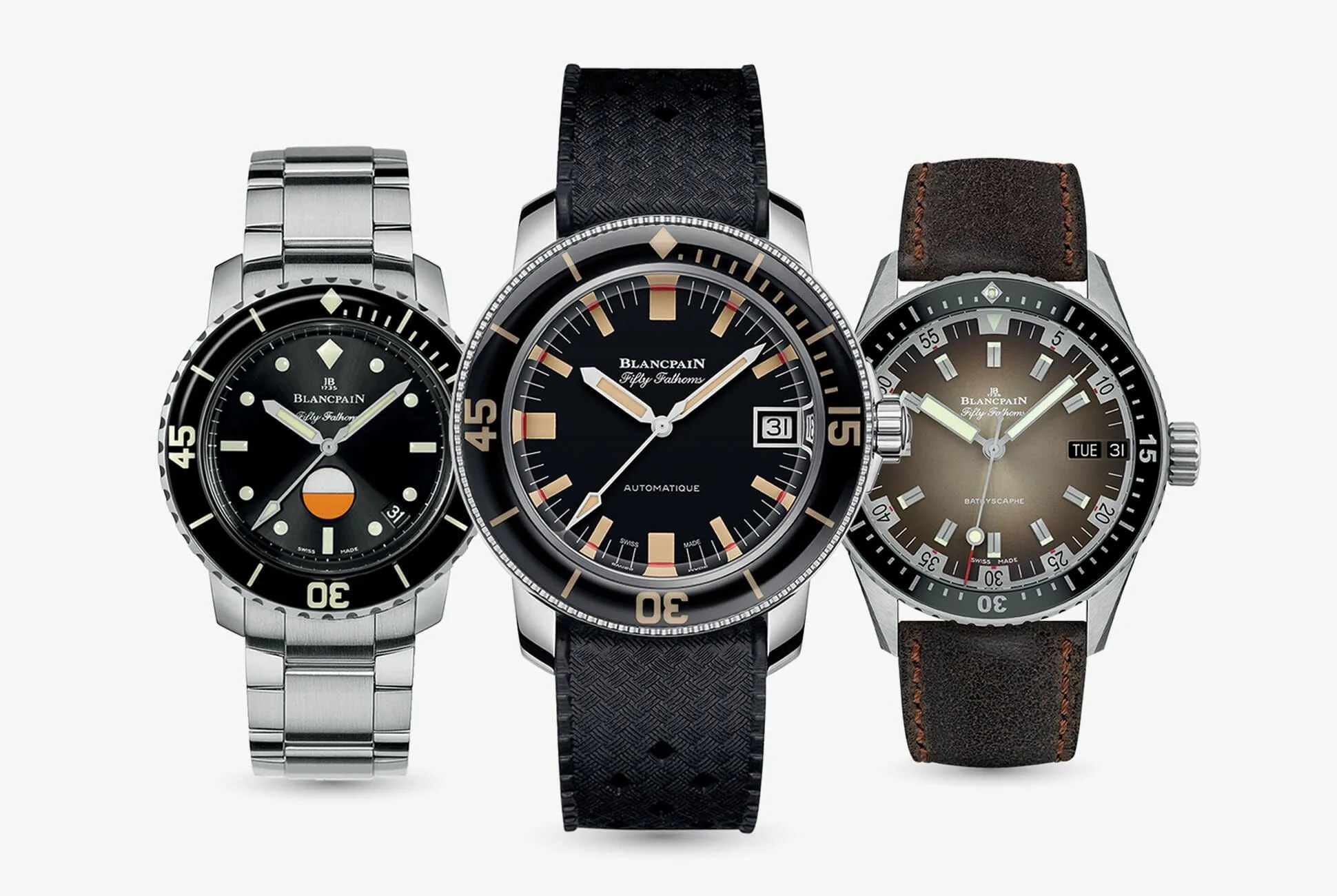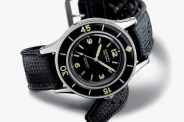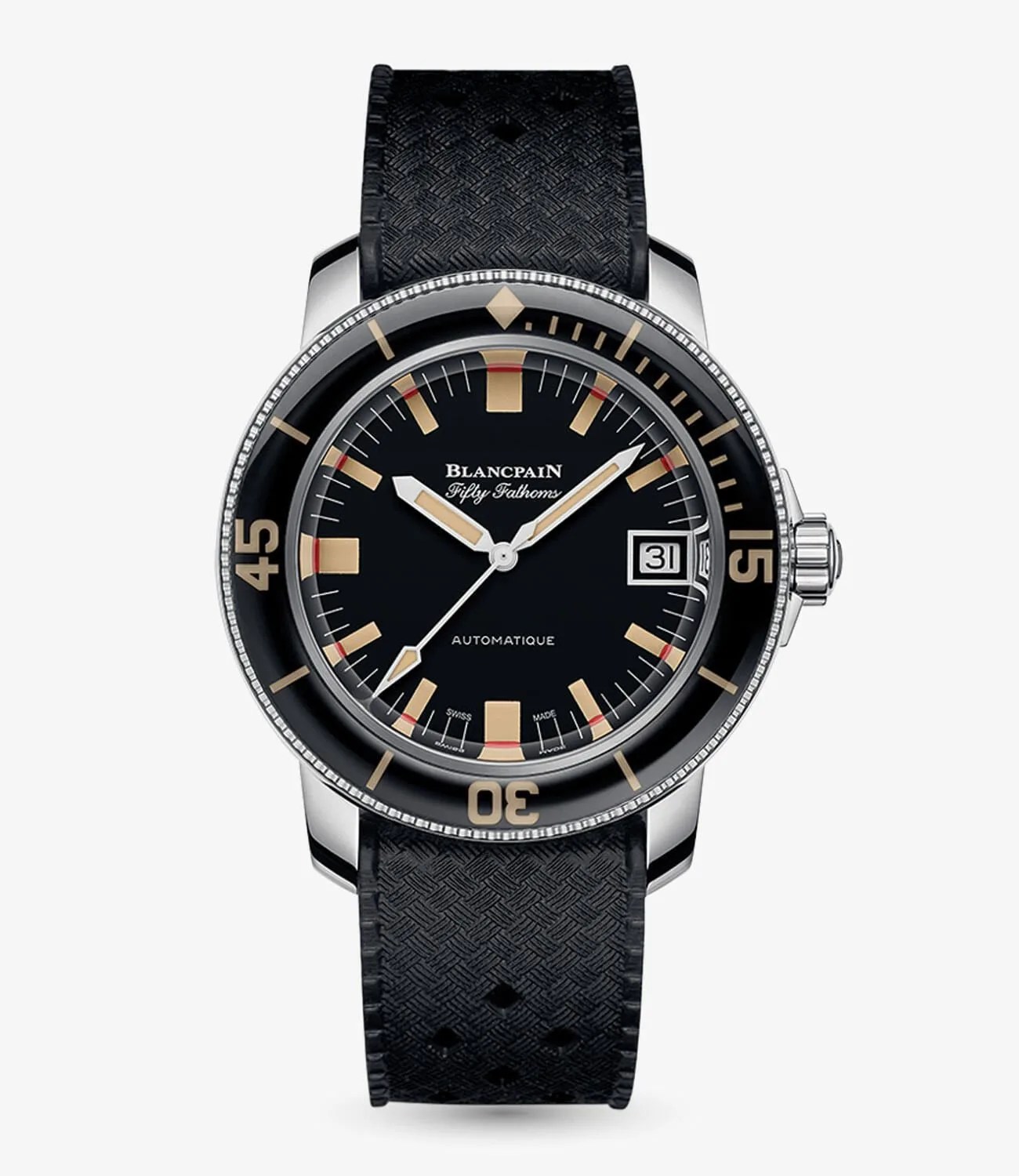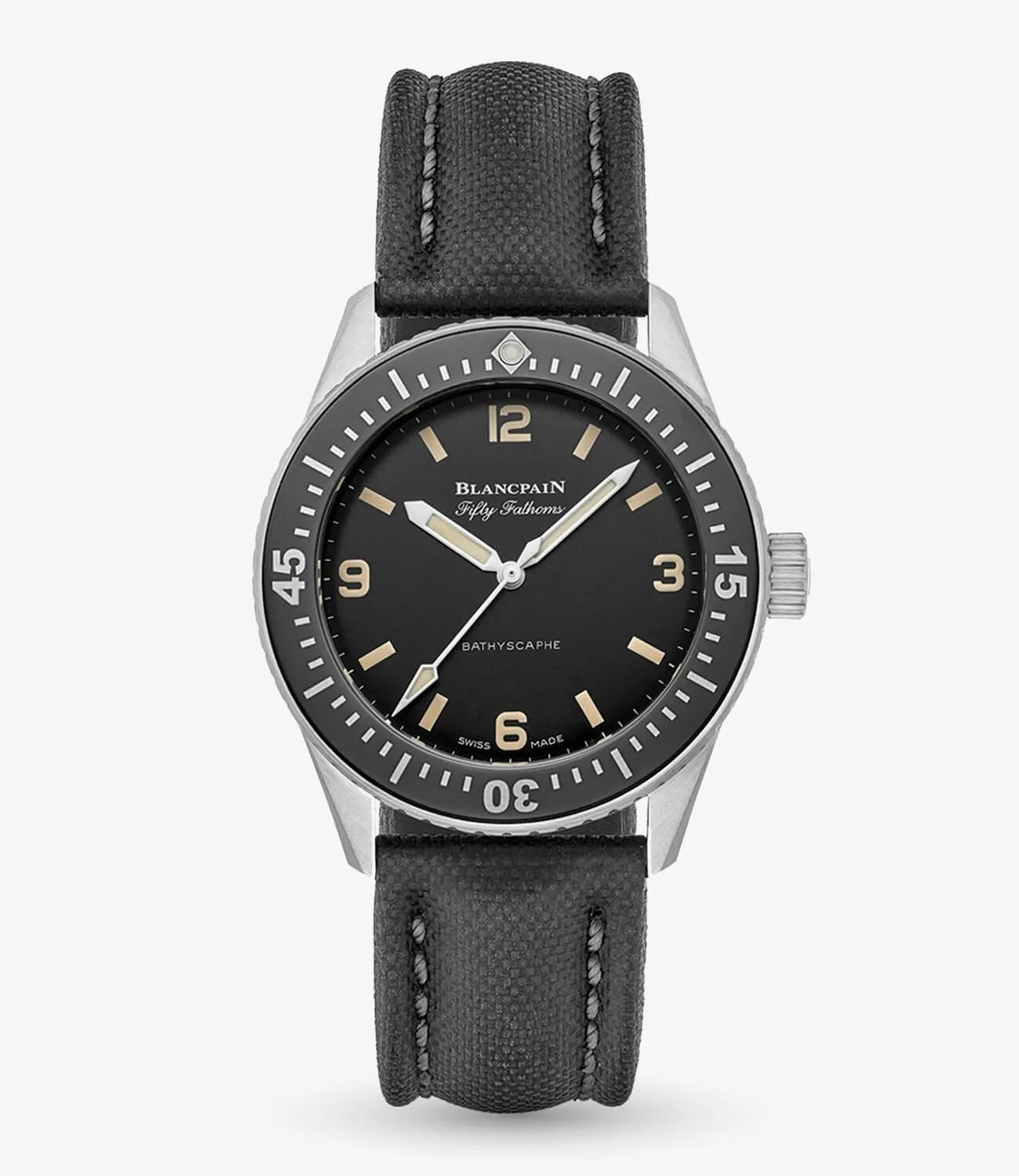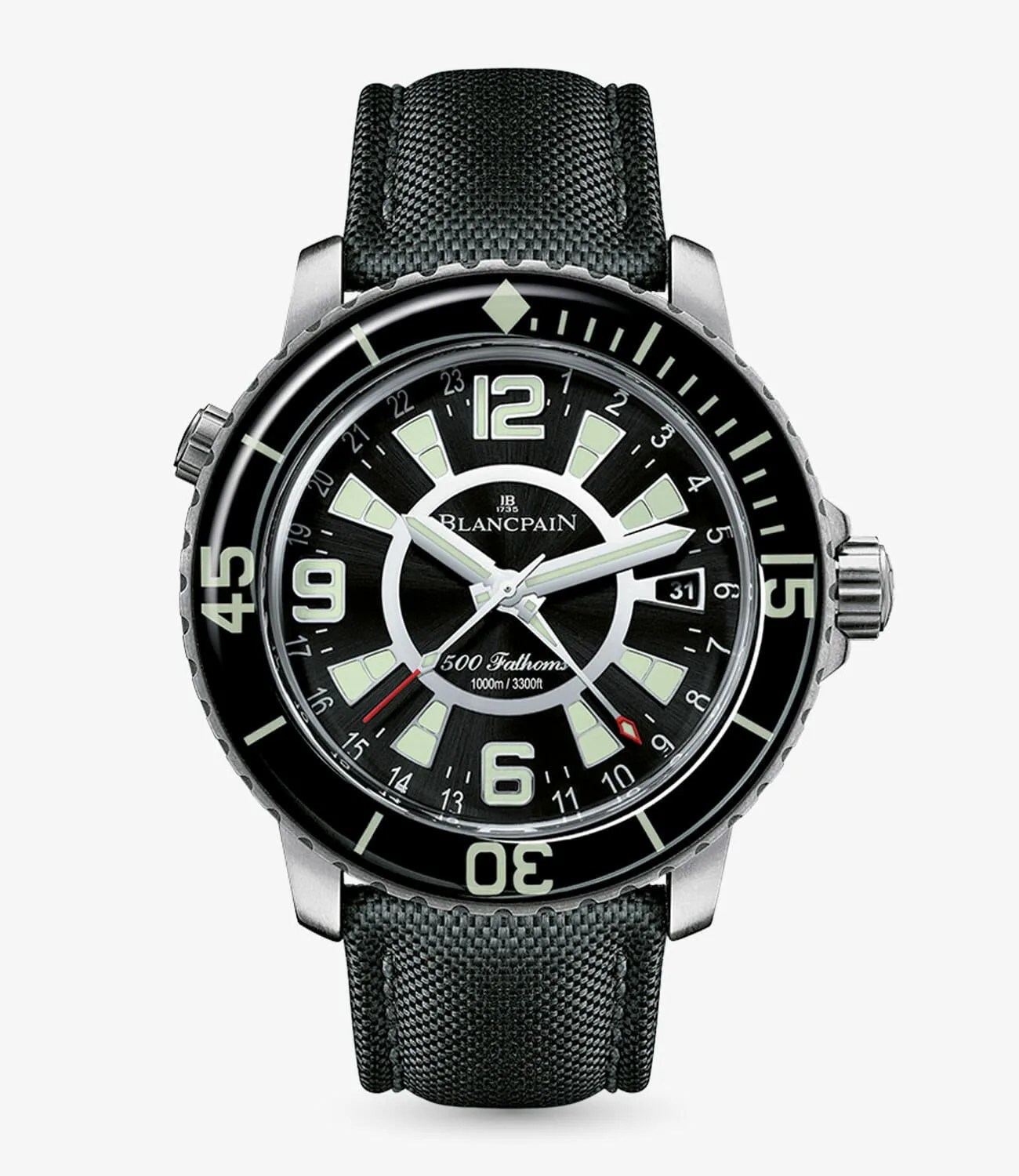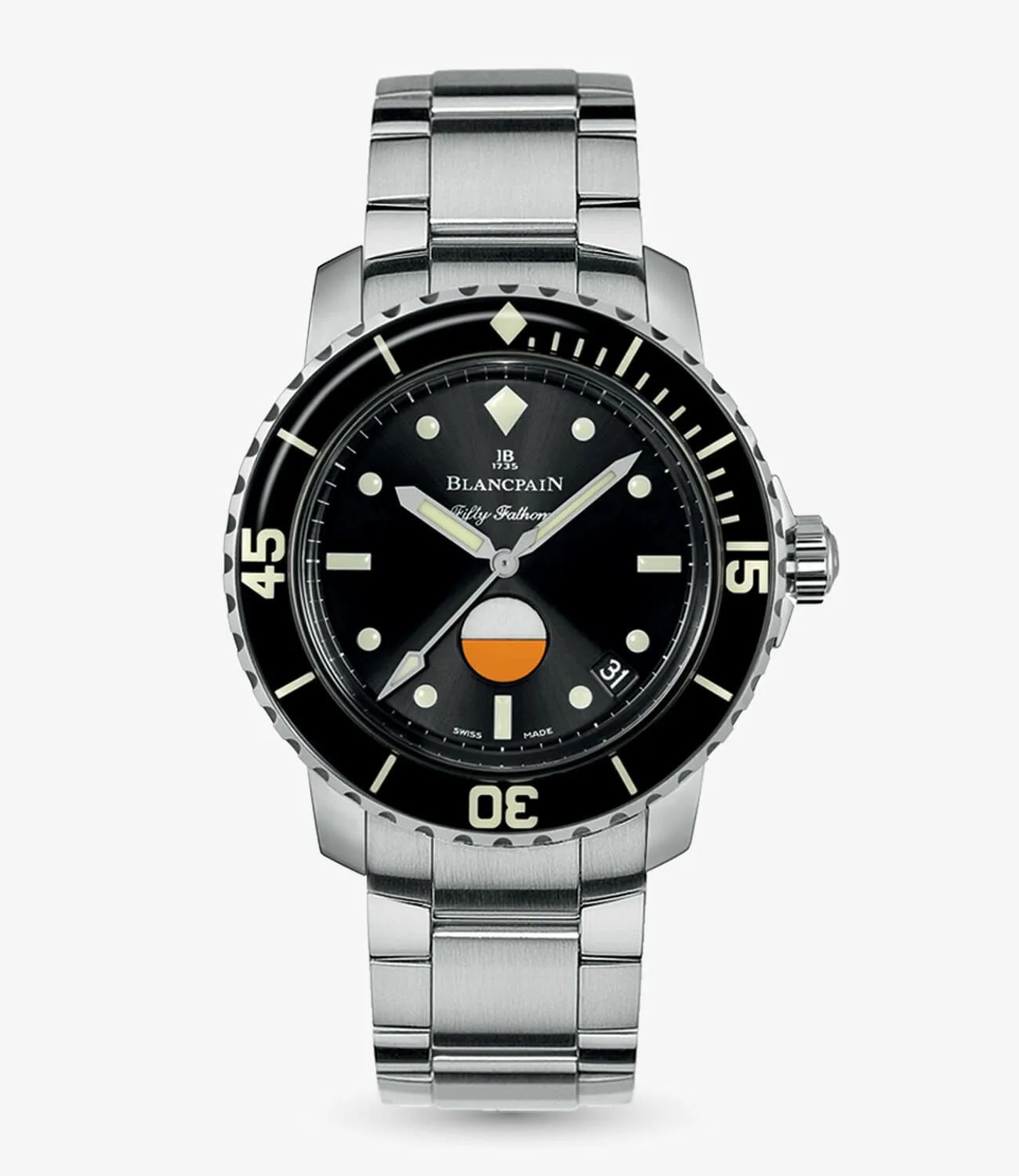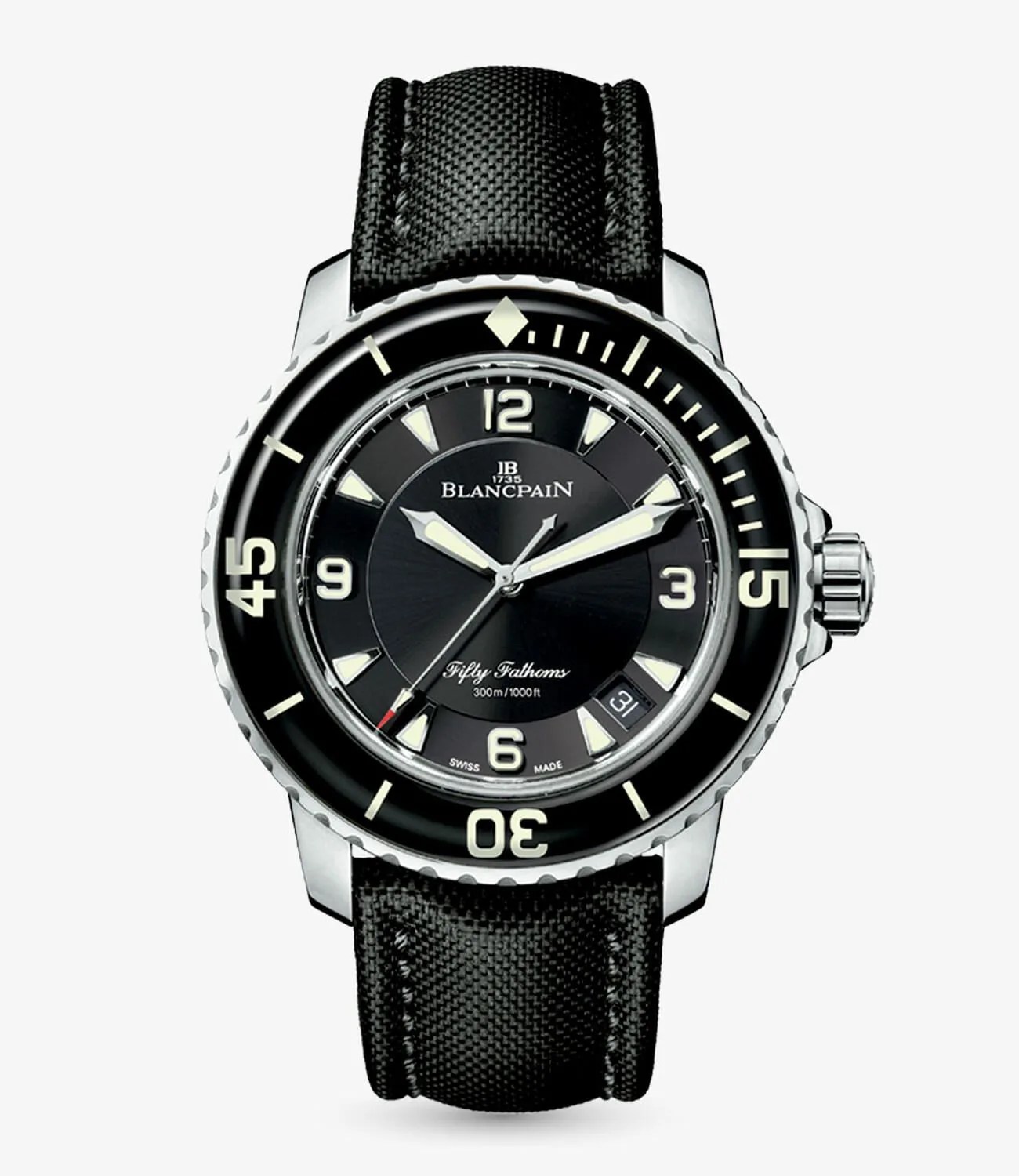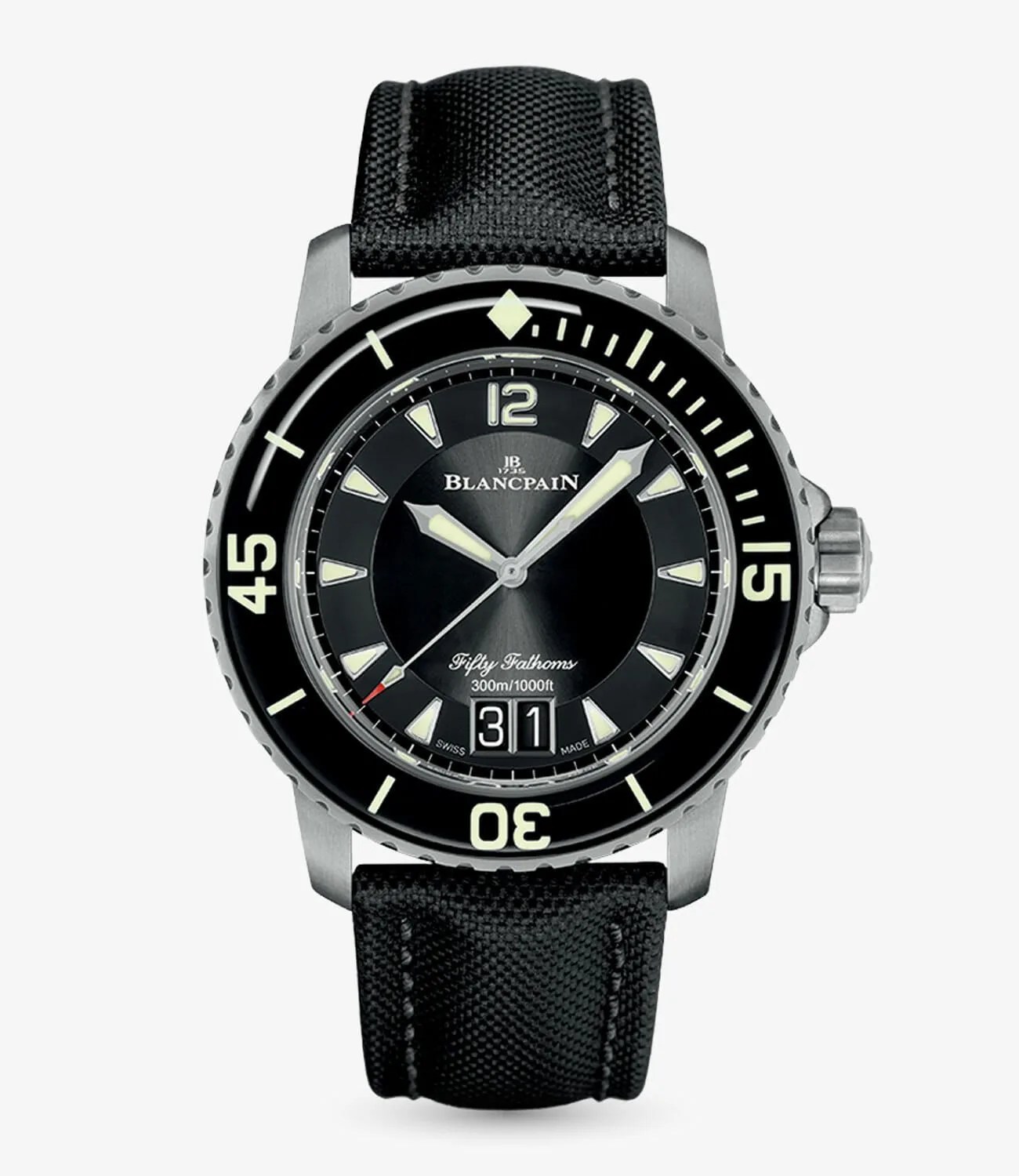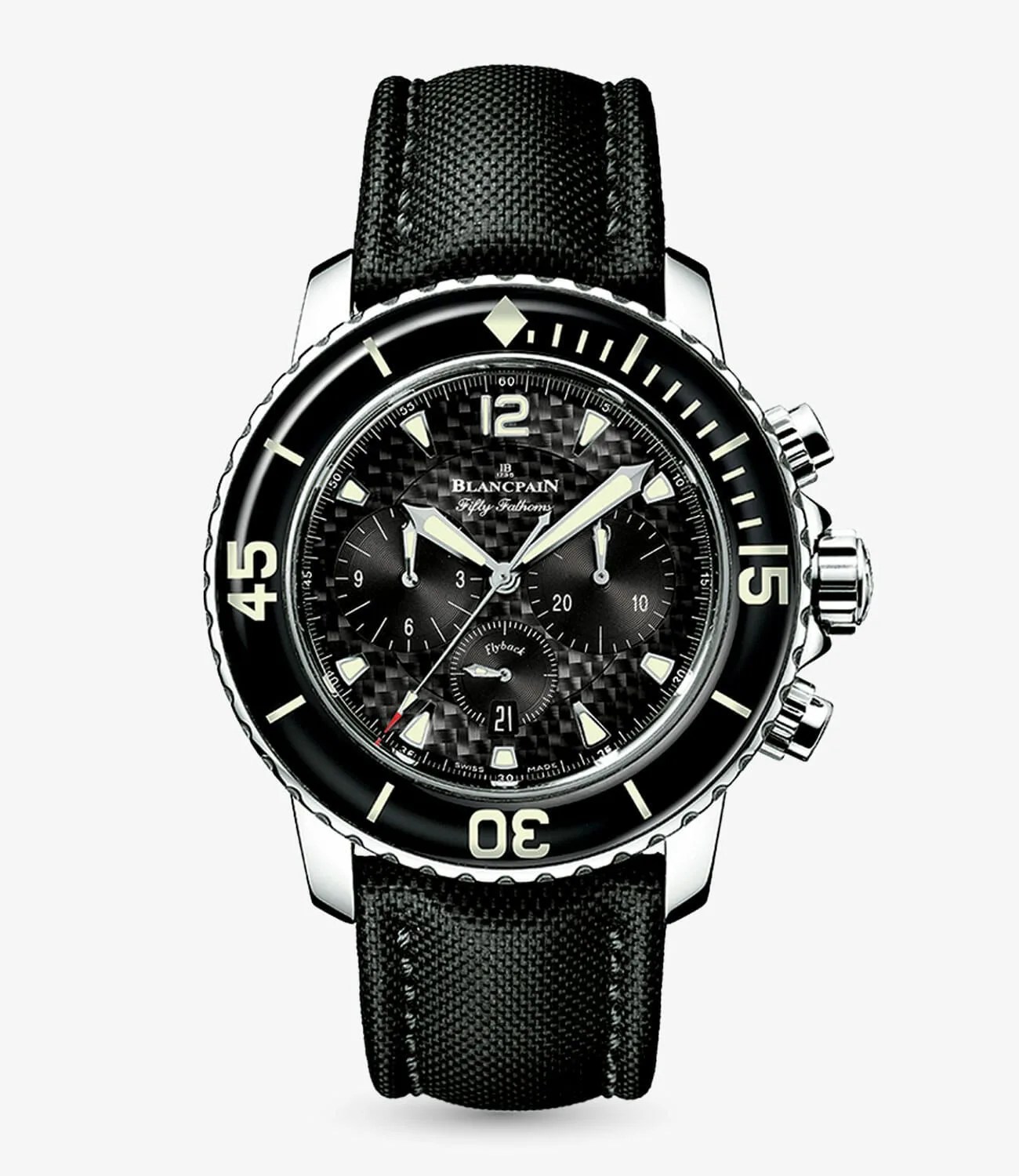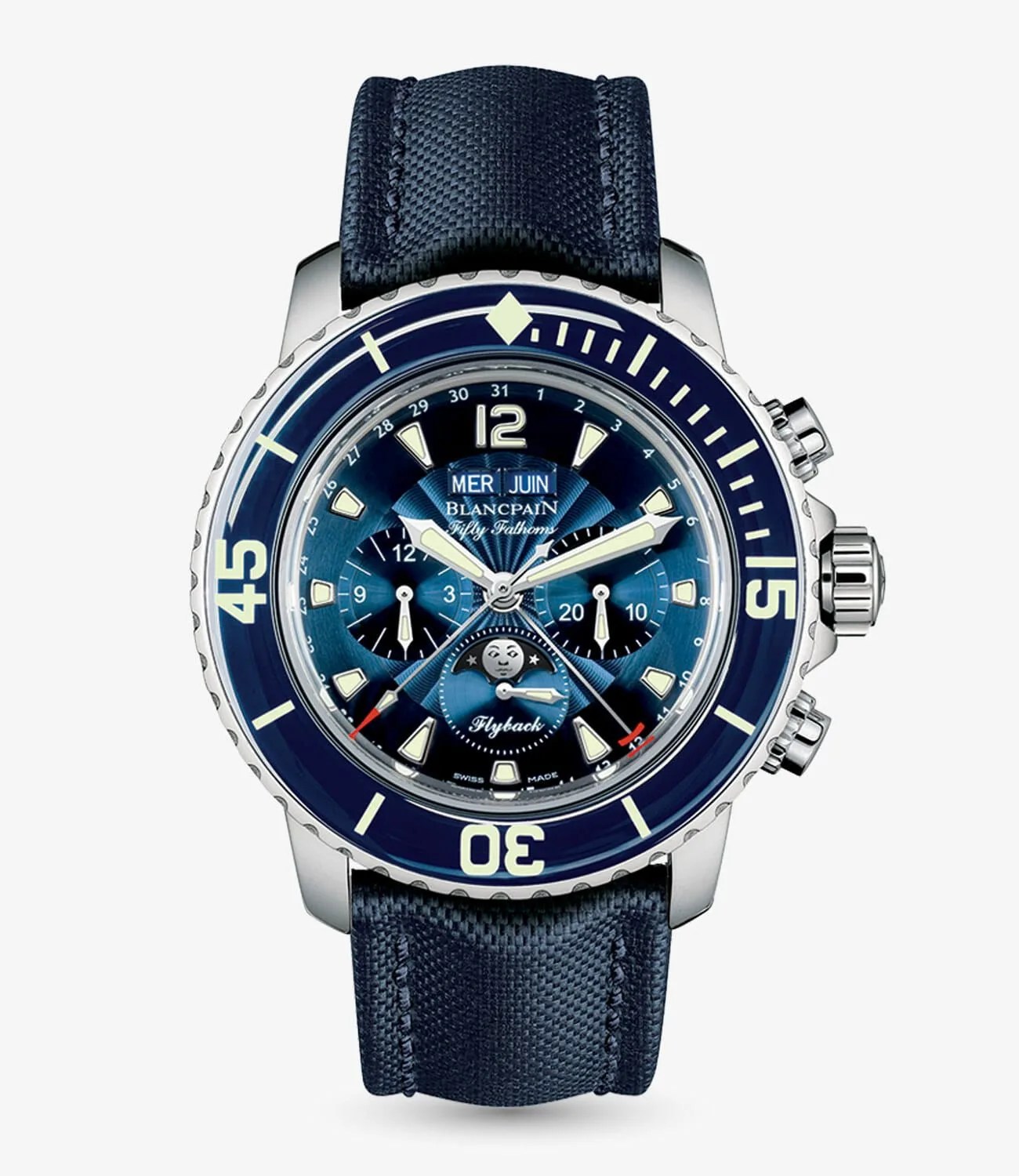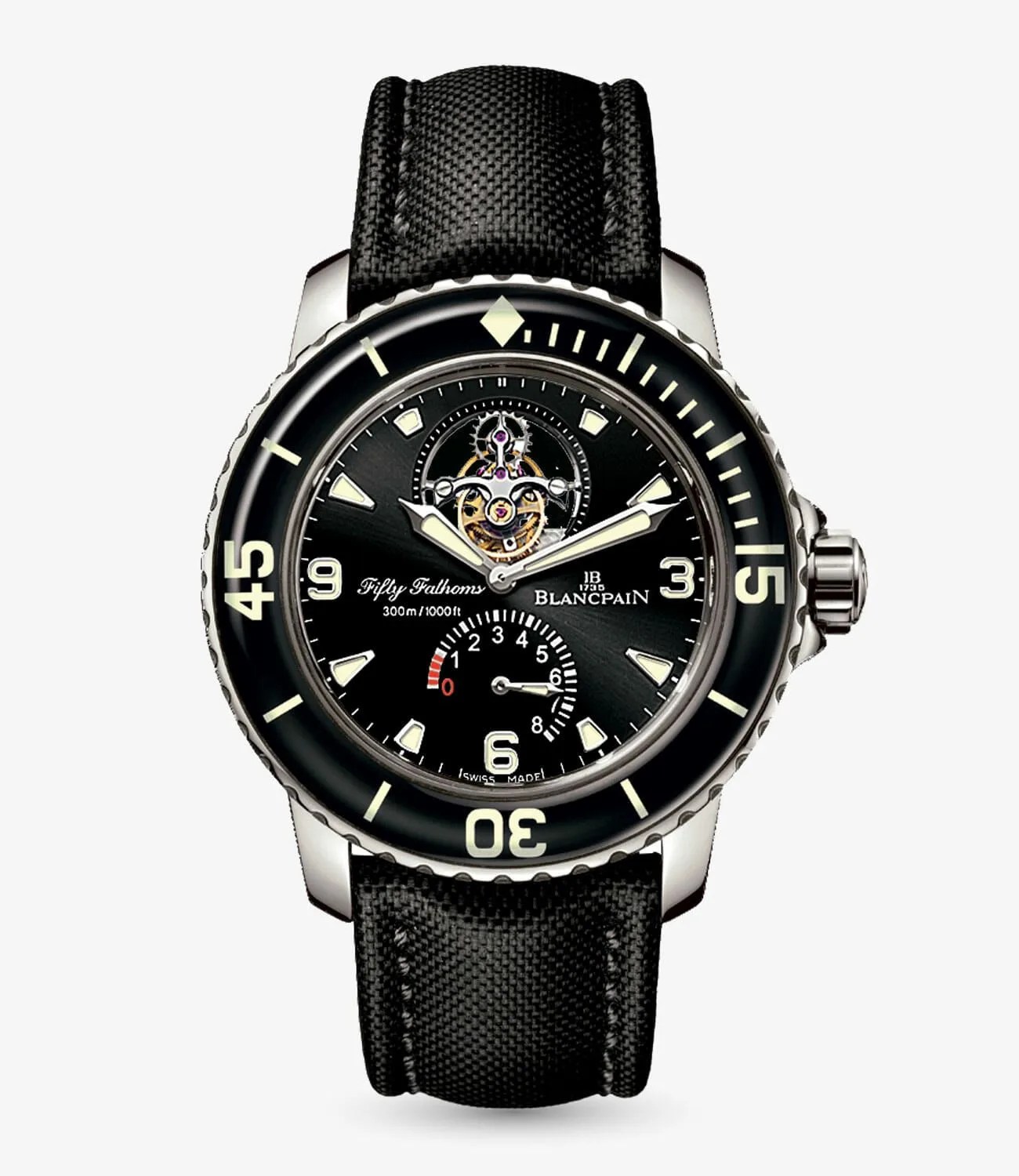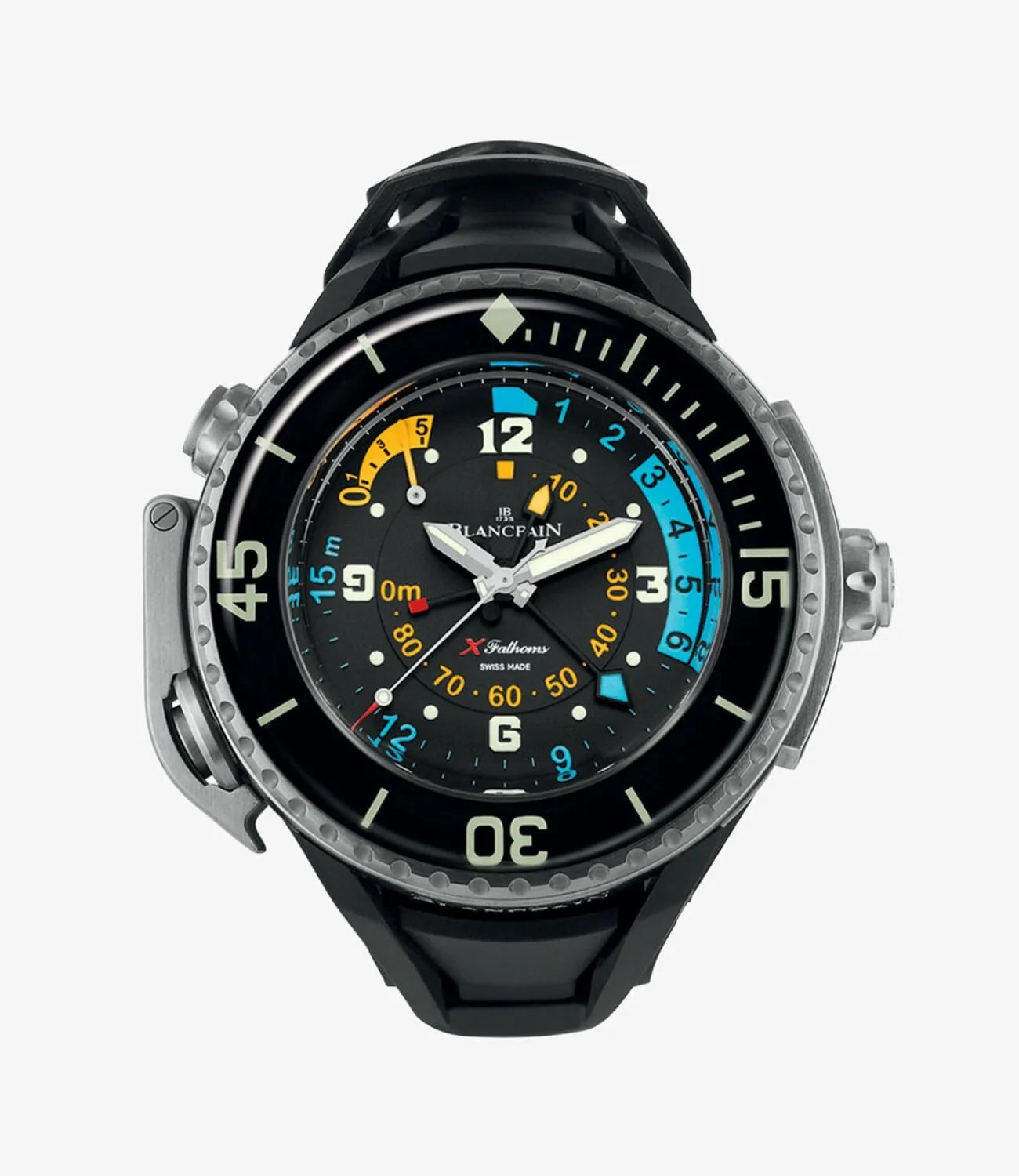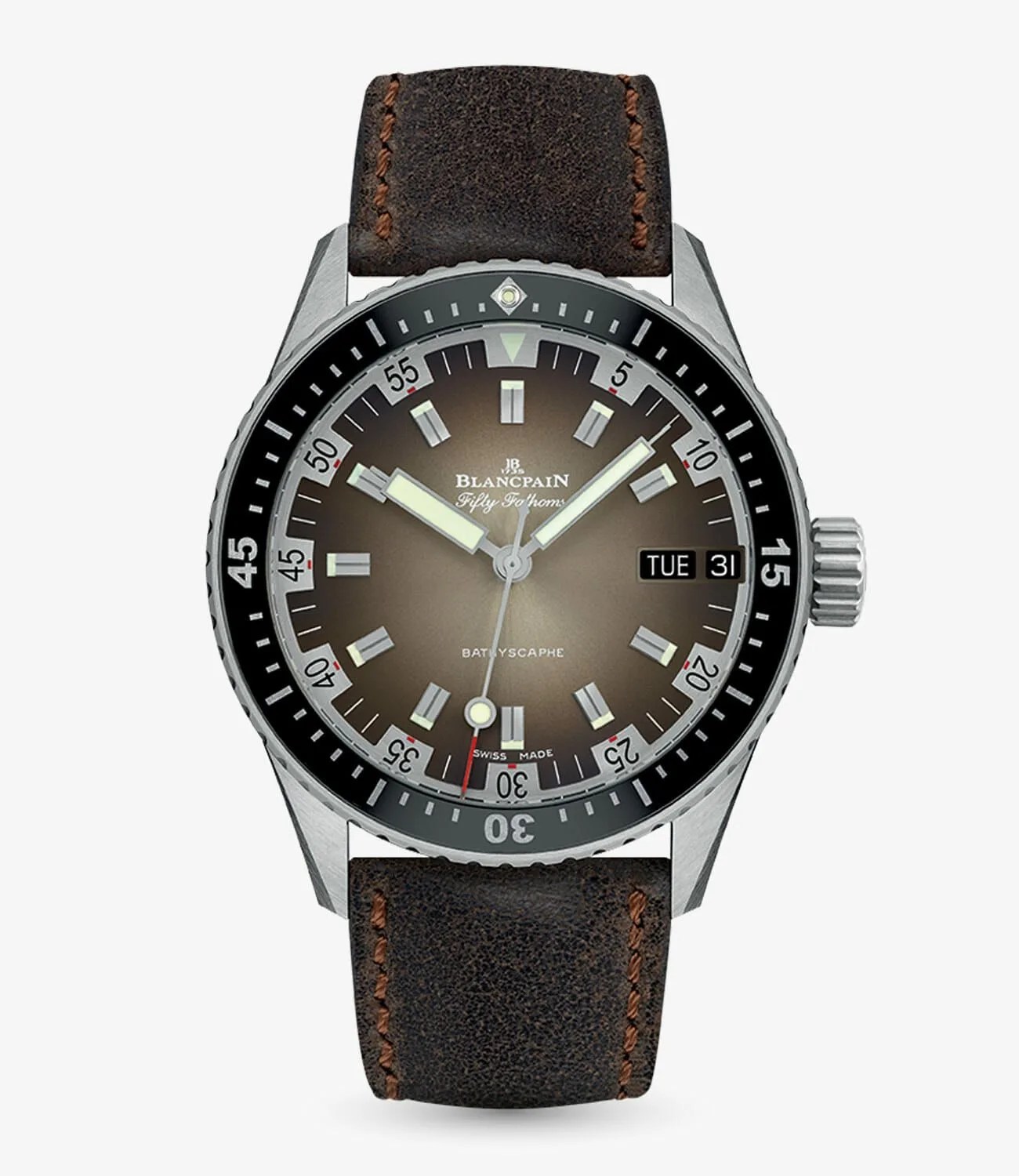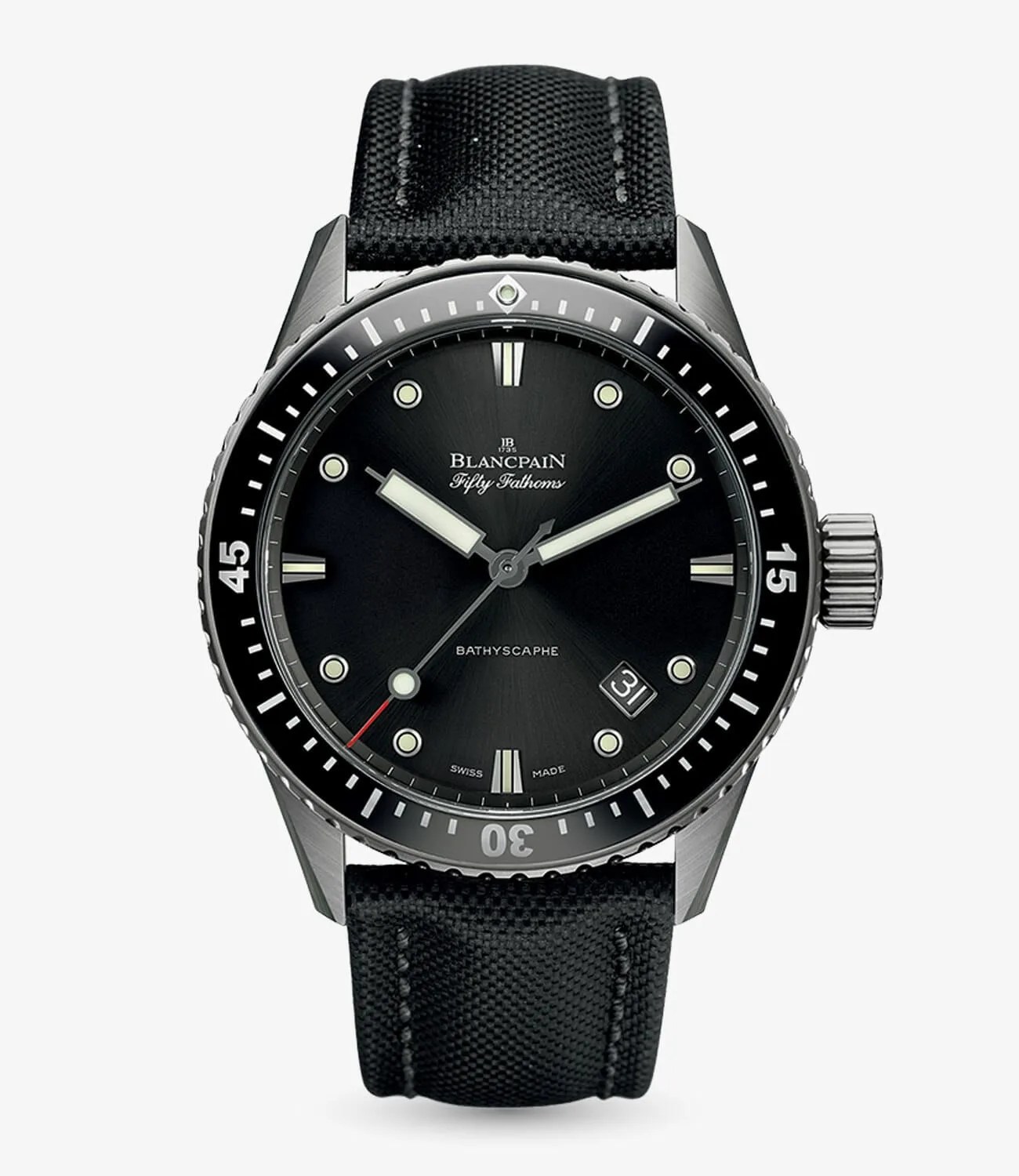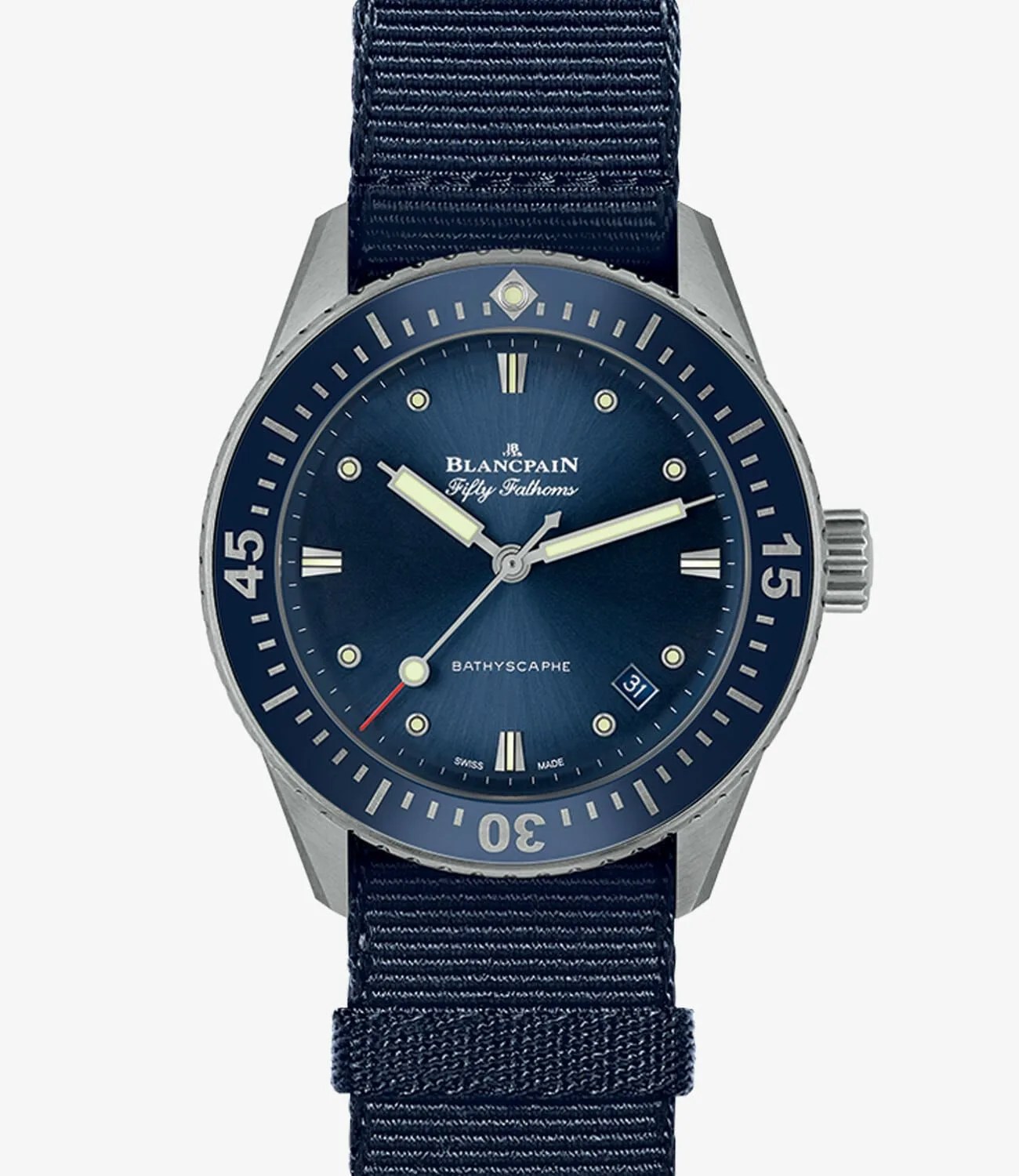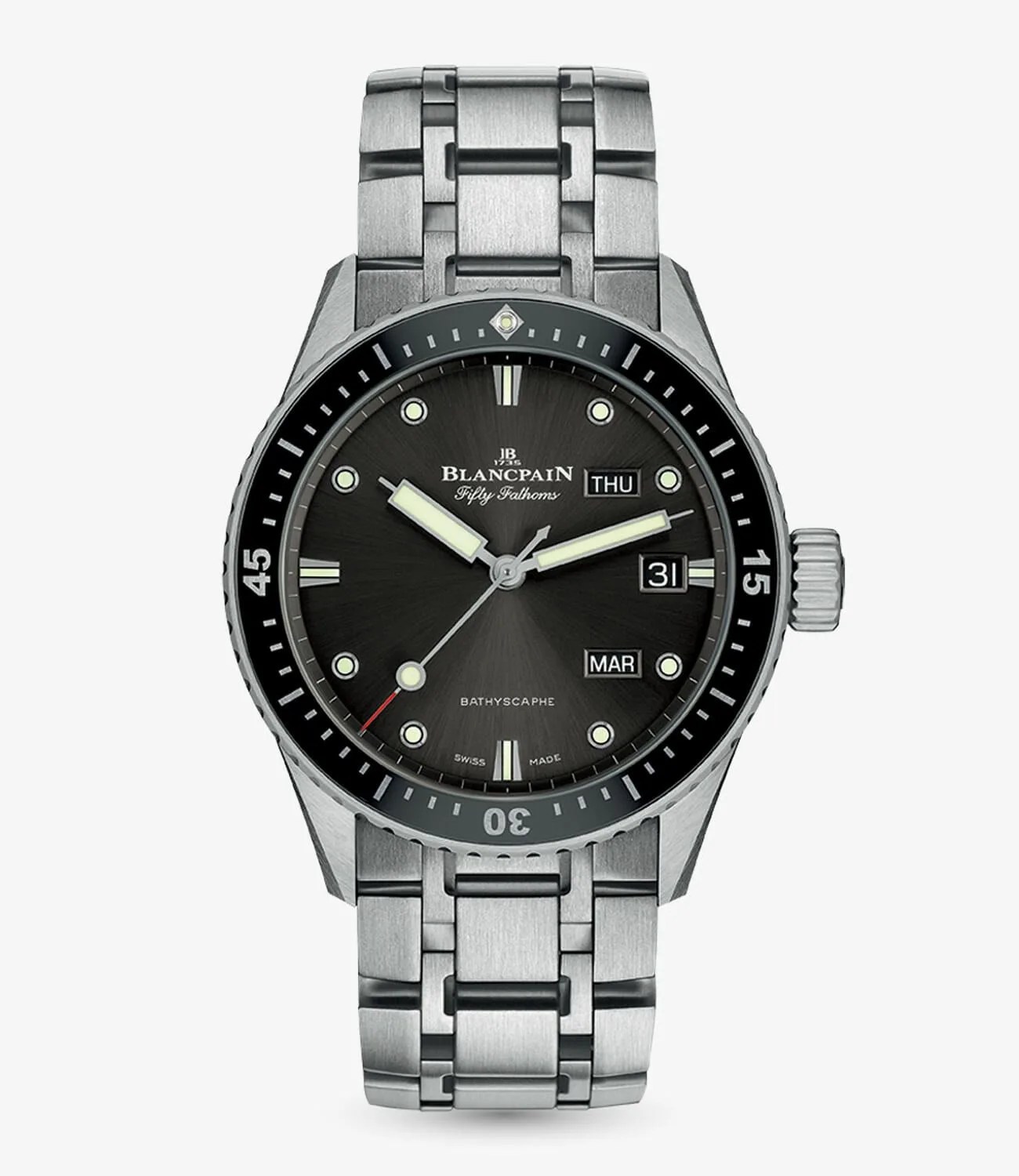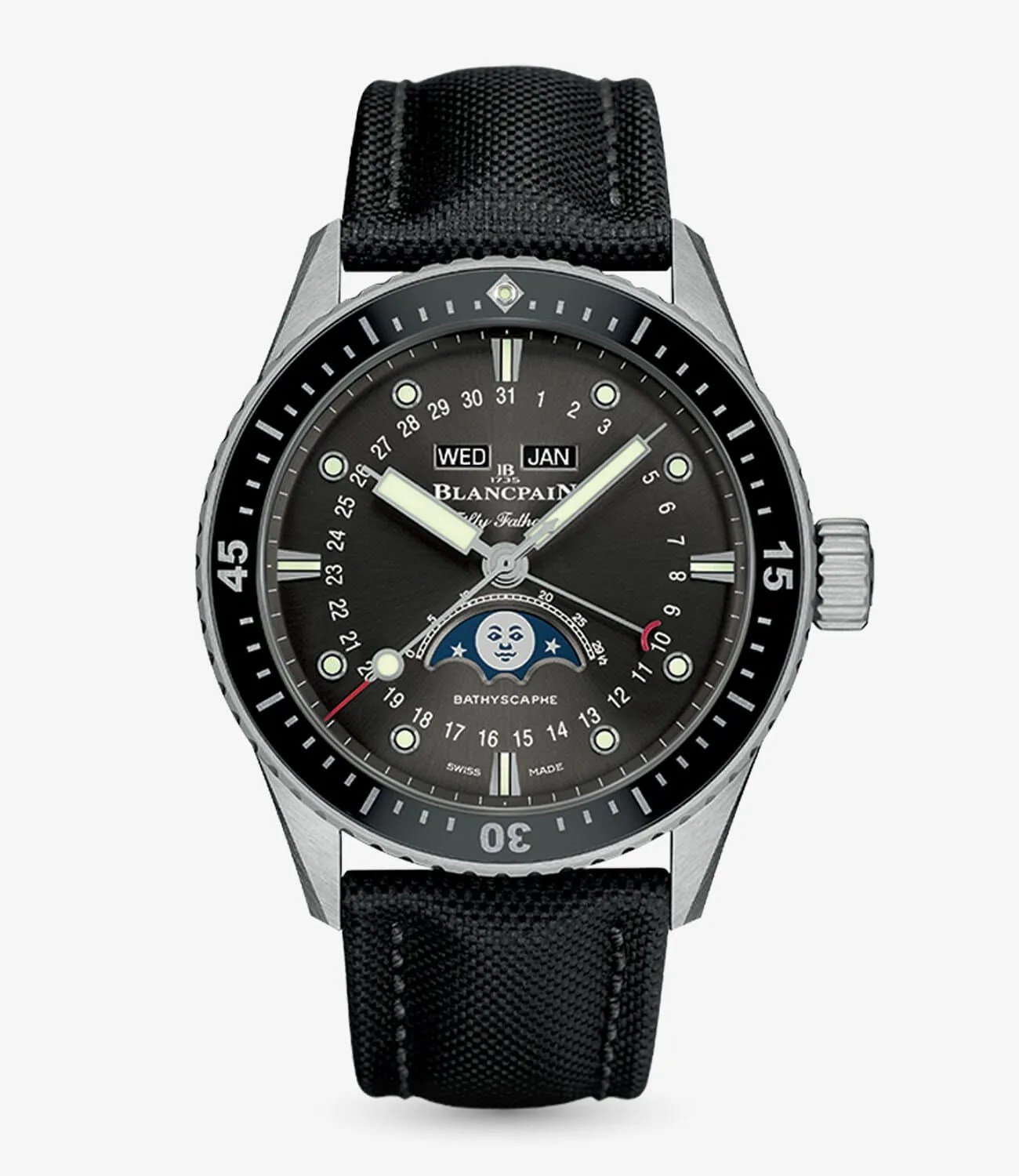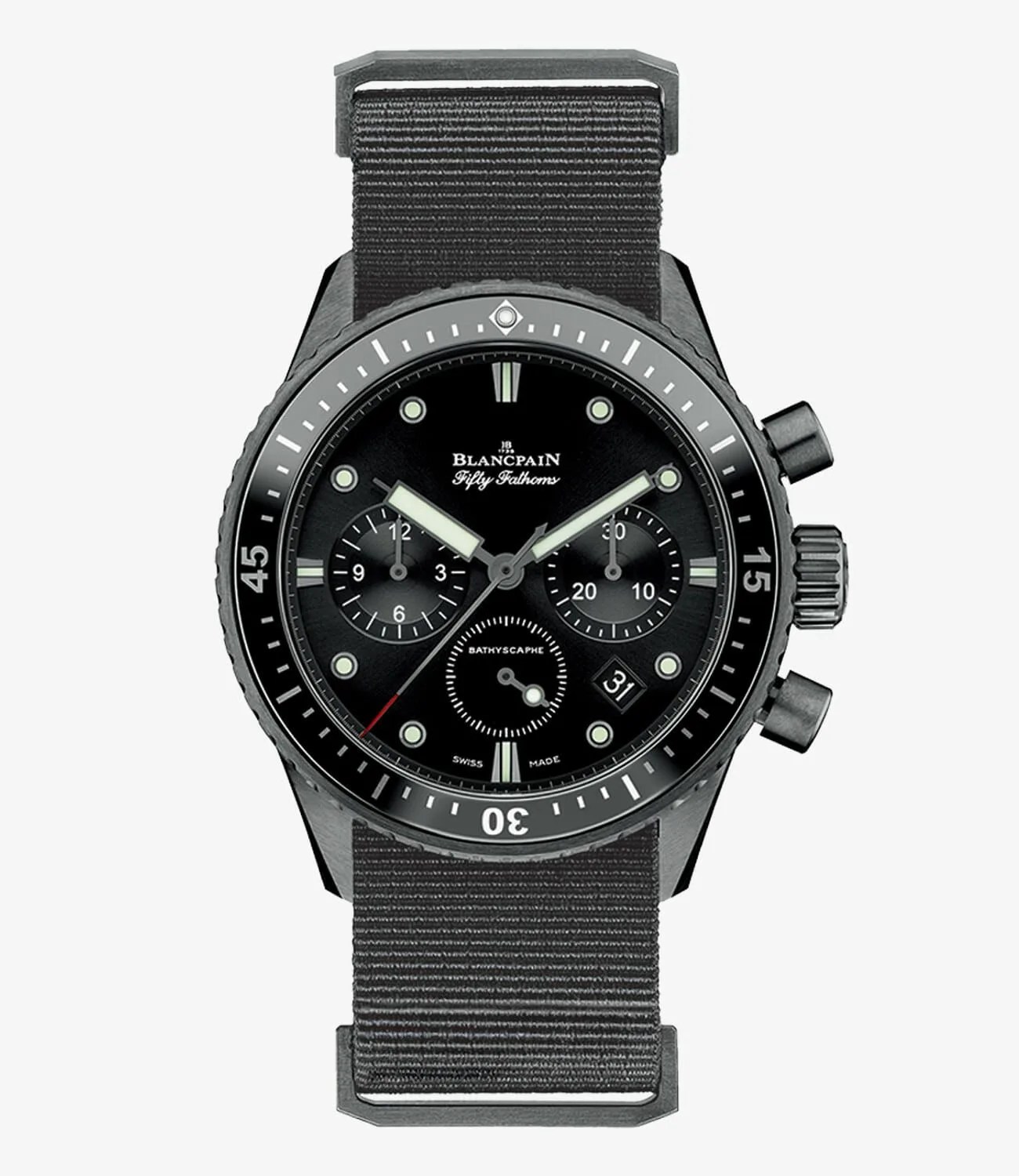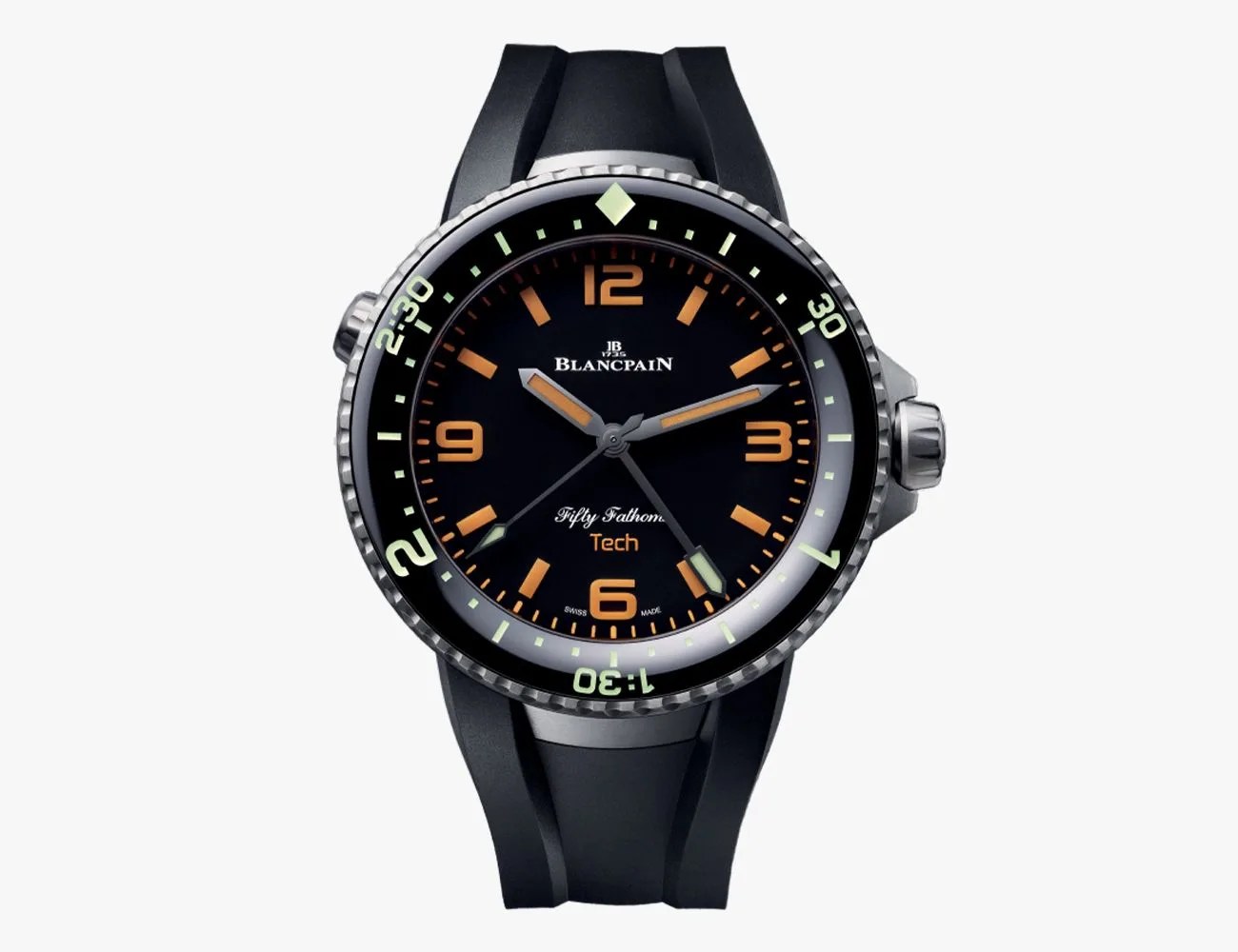Welcome to Brand Breakdown, a series of comprehensive yet easy-to-digest guides to your favorite companies, with insights and information you won’t find on the average About page.
Given the hype, you’d think Rolex or Omega released the first dive watch, but the Swiss firm Blancpain was right there neck-in-neck with Rolex in 1953 with the release of its famed Fifty Fathoms.
The French Navy’s elite SCUBA squad, called the Nageur de Combat, had specified a number of features for the watch: a locking timing bezel to assure dive times didn’t get overextended, an auto-winding movement to reduce wear on the crown threads, and a leak warning system — in this case a clever dot on the dial that would turn red if moisture was present. Dubbed the Fifty Fathoms, this watch became the functional and aesthetic template for countless dive watches to follow.
By the 1970s, Blancpain had bent the aesthetics of the Fifty Fathoms toward the disco-era’s blingy vibes, all in an attempt to keep pace with a new breed of watches loosely called “luxury sport watches.” The Audemars Piguet Royal Oak sparked the trend, but the Fifty-Fathoms in its 70s get-up didn’t endure the rise of electronic quartz watches in the 1980s.
A few acquisitions of Blancpain went by before new management released the Fifty Fathoms again in 2007, this time using the original designs as inspiration. Watch fans the world over swooned. Since 2007, the Fifty Fathoms collection has swelled to include over 70 watches, making this one of the largest and most varied dive watch collections available today. Models range from 1950s-styled look-alikes, to large modern affairs, to watches with mechanical complications — and there’s even a handsome tribute to those blingy 70s models.
Common Features of Modern Fifty Fathoms
-In-house mechanical movements
-Silicone balance springs
-Unidirectional sapphire or ceramic timing bezels
-At least 300 meters (30 bar) of water resistance
-Relatively thin cases (for a dive watch) coming in around 13mm on most models
